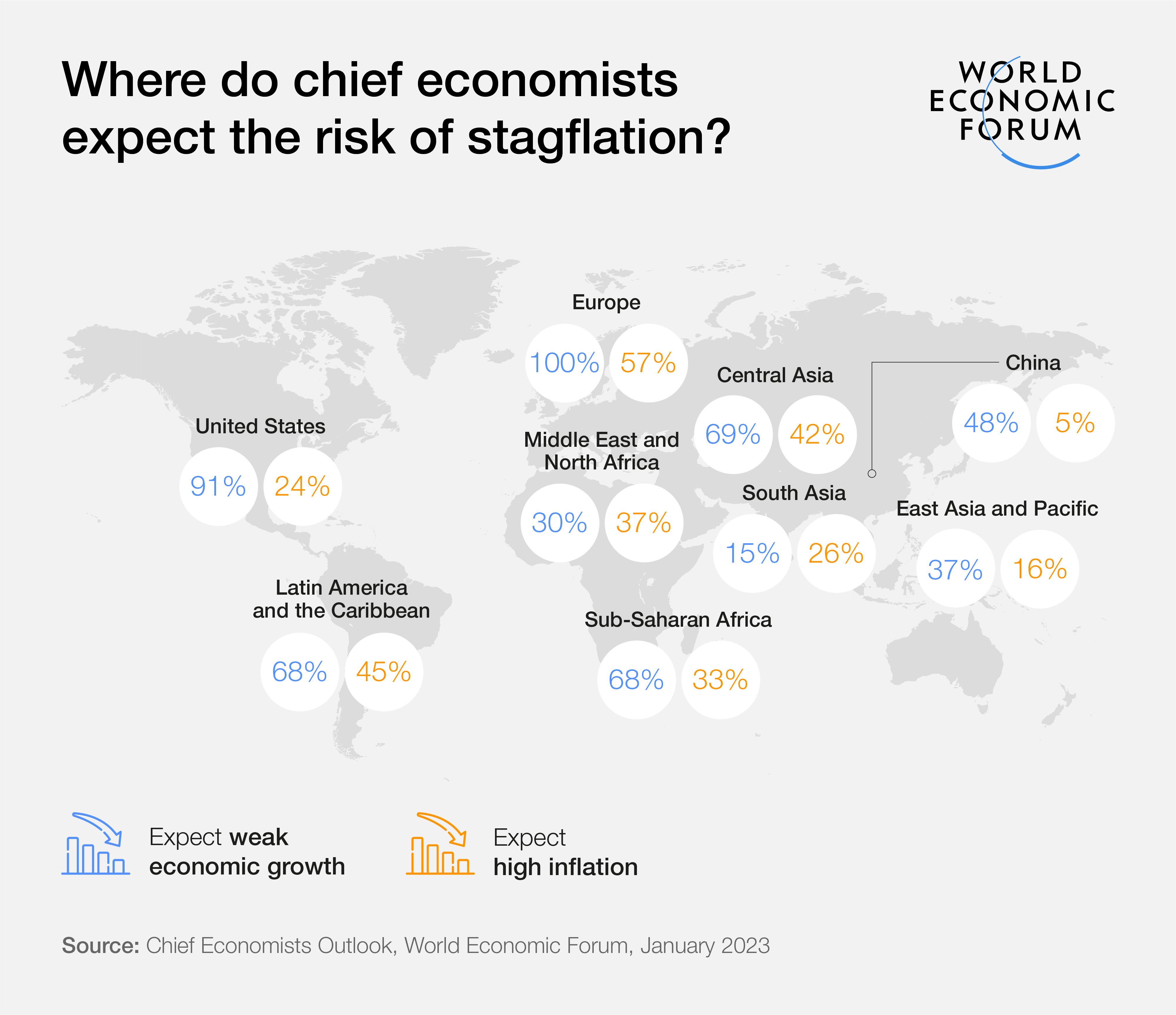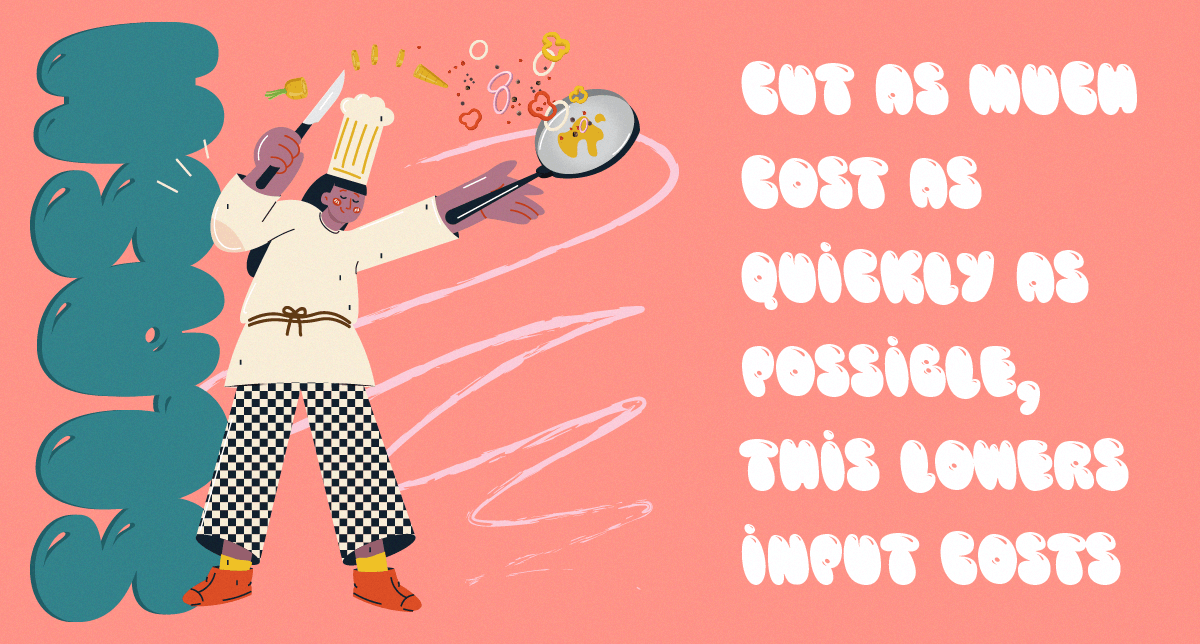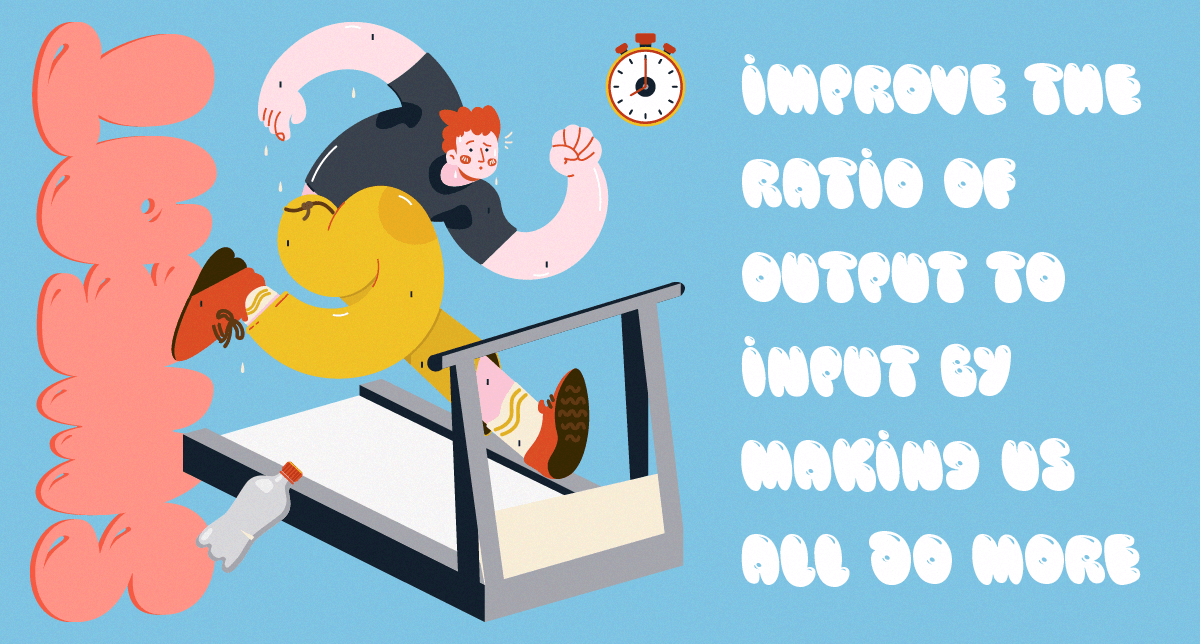The economic outlook for 2023 is turbulent to say the least. The World Economic Forum reports a few bright spots across the globe. The MENA, South Asia and Pacific regions appear set to avoid the worst impacts of recession and high inflation. But 100% of Chief Economists in Europe expect weak growth in the region, and more than 50% foresee high inflation. The United States fares slightly better, with only 24% expecting high inflation – but 91% still anticipate weak economic growth. Safe to say that for many of us, it’s going to be a challenging year.
So how should business leaders and executives react? Well, there are three ways to survive in difficult times. Sadly, I’m old enough to say I’ve survived one big recession, a few smaller ones and a pandemic. But the impending recession ahead of us is very different. Which is, perhaps counter-intuitively, considered relatively normal.

Ask an economist and they’ll tell you every recession is different. You need to adapt to the specific circumstances that await you. In this case, at least for those of us in the UK, that means the return of double-digit inflation – something we haven’t seen for the past 40 years. And over the next 12 months, it’s a phenomenon that every business leader, marketer and researcher in the country will have to grapple with.
The Impact of Inflation
Inflation hurts in a particularly practical way. High rates of inflation mean that many businesses are seeing costs rise a lot faster than revenue. The challenge that this creates is an immediate, short-term one. And one that is almost inescapable, even for those with loyal or contracted customer bases.
The question of price is one that naturally arises. It’ll be debated in boardrooms over and over. The simple solution is that raising prices counteracts the effect of rising costs. But, that’s not always the case. No matter how good your communication, an increase is always a trade-off against value and affordability. Some will determine that it is still the best course of action. But what else can you do?
| Tweet This | |
| In any period inflation, the question of increasing prices arises. As costs go up, it makes sense to raise revenue. But this is often far from the most effective long-term strategy. . |
My experience suggests an effective response should all be about productivity. It’s time to talk about that P word, and it needs to become a core part of your vocabulary. Because when prices are squeezed, it is the lever that best redresses the tricky balance between revenue and expenditure.
So, what does this mean? Well, productivity is defined by the OECD as a ‘measure of how efficiently production inputs, such as labour and capital, are being used to produce a given level of output.’ And if you’re looking for what those measures are, the OECD publishes a complete compendium of productivity indicators – available online.
Three Paths to Productivity
To put it simply, when you reach the trade-off ceiling between supply and demand, the next most effective method is to deliver the highest level of output with the minimum level of input. There are three ways to improve your current level of productivity. But only one leads to long-term success. Let’s look at each of the options.
1. Slash - Trimming the Excess
This is the simplest option, and the one that business leaders tend to turn to first. It involves cutting as much cost as quickly as possible. Lowering input costs fast by cutting resources, usually headcount and budgets, is an effective short-term solution. But it’s not sustainable, not particularly ethical and doesn’t create an environment capable of building long-term success.
Nevertheless, it’s a common tactic. The website layoffs.fyi has been tracking layoffs, a useful barometer for the popularity of the slash tactic, in the tech sector alone since the start of the COVID pandemic. How bad has the damage been? Well, over 1,000 tech firms laid off 150,000+ workers in 2022 alone. And those numbers only seem set to grow in 2023.
Ouch. That’s a lot of firms, looking to balance revenue and expenditure pretty quickly. But those actions will remain in the collective conscious of consumers and employees for a lot longer. And with a smaller staff base, capitalising on recovery will be much harder. It is the definition of short-termism. So, what’s the alternative?

2. Sweat - Bolstering Productivity
I call the second approach the sweat tactic because it involves increasing output by making us all do more. Although it can be an independent, this tactic is often associated with slashing. As headcounts and budgets are cut, those that remain are expected to do more with less.
Now, it’s certainly possible to be directional and devise operational plans that minimise disruption or empower greater efficiency. But the human cost is largely the same as cutting. It’s another short-term solution that leaves little room to capitalise on economic recovery.

3. Smarts - Achieving Long Term Balance
So, one option remains. The smart approach involves a critical reflection of what is required and what is not. The time-frame across which this question should be considered is what separates it from slashing and sweating. Both of those approaches ask what is the most essential to prioritise in the immediate future.
The smart approach is about considering the shape of your business in one to five years, regardless of the current economic climate. That’s what makes it a long-term solution. Think carefully about what is needed and what isn’t, what is adding value and what is draining resource. Then seek out the people, processes and technology that will minimise the impact of low priority activities.

What Comes Next
Technology is the great enabler. Smart, targeted investments will streamline existing processes, lower barriers, remove blockers within an organisation and create a smoother flow of action. That means harnessing what’s available at the current moment and aligning your whole operations with the best possible technology. For example, at this current moment, I’m acutely aware that AI tools like Chat-GPT will play an important role in streamlining operations in the year that lies ahead.
Ultimately, it is the smart approach will help your business in the long-term. To all executives, insight and marketing leaders – I’d urge you to look beyond just surviving inflationary times. Draw up plans that see through the immediate pressures and into economic recovery. If the crises I’ve lived through have taught me anything, it’s that this approach will set you up to achieve so much more. And, if that wasn’t convincing enough, it is also the path that national economies rely upon to generate better GDP, lifting us all up together.
PS. Driving productivity across research operations and finding new efficiencies is a key pillar of the FlexMR insights empowerment framework. We've built the world-leading InsightHub platform to help research, product and marketing teams put customers at the heart of every business decision, whilst streamlining, scaling and supercharging operations. Interested in how we do this? Find out more here.


















